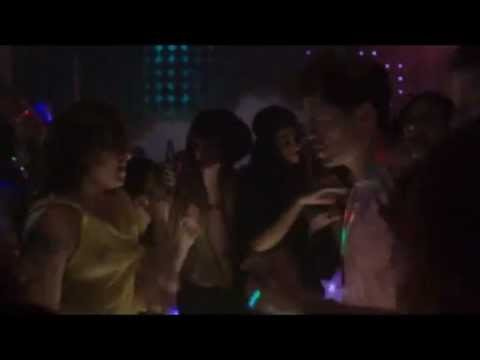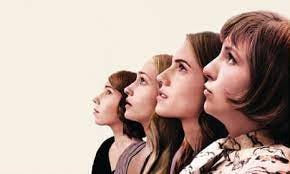In How Fiction Works, James Wood, writing about character, quotes Ford Maddox Ford’s on Joseph Conrad’s notion of “getting a character in.” “Ford and Conrad loved a sentence from a Maupassant story, “La Renine Horteuse.” ‘He was a gentleman with red whiskers who always went first through a doorway.’ Ford comments: “That gentleman is so sufficiently got in that you need no more of him to understand how he will act. He has been ‘got in,’ and can get to work at once.”
My own version of that got in sentence is an early description of Undine Spragg in Custom of the Country by Edith Wharton. “She was always doubling and twisting on herself, and every movement she made seemed to start at the nape of her neck, just below the lifted roll of reddish-gold hair, and flow without a break through her whole slim length to the tips of her fingers and the points of her slender restless feet.” It’s good practice to introduce a character in action rather than from a photograph or a mirror image. An active portrayal can include insights into character, so two birds. I often think of Undine twisting and turning in her shabby hotel room like a jewelry box plastic ballerina, aching to be released to move freely in the world. She has been made real to me, “gotten in” as a vital presence and not a concept.
I thought about this notion of getting a character in as I began my rewatch of Girls. In my nighlty rotation of sitcoms I watch on my Ipad in bed, it had come back around, just in time to do some thinking about it alongside the excellent novelist Lynn Steger Strong who is writing about the show on her Substack.
The idea is we’ll write about it separately for a few posts and then talk about it with each other, a conversation we will post.
When I looked up the first air date of Girls, (on HBO, now on Max) I was shocked to find it was April 15, 2012. I imagined it was in the early ‘90s when everyone began to say “Brooklyn” with the thrill of a proprietary discovery in their tone. But it was only a little more than 12 years ago. Brooklyn was already old hat and expensive and the girls were hard core millennials. I’m not sure why I put it so far back in my memory—perhaps because I have watched the series so many times. Perhaps because I pictured it appearing when I was still living in the city myself, though my version of the city was very different than the Girls. Also I was already old then, but still felt closer to their age than to my own now. Girlhood was my thing. I was primed for the show for a couple of reasons—first by the onslaught of pre-publicity. Writer/director/star Lena Dunham’s youth and background struck up envy and discord— much as Joyce Maynard had in my day— even before anyone saw her Hannah, her scripts, her direction. A lot of ink and developer was spilled on Girlsand the young attractive cast. I couldn’t help but be aware it was coming, and curious. The second reason it was a show for me is that I am a sucker for work about groups of girls and women—possibly because I went to a girls’ school and never quite left. Give me a convent, a coven, a secret club, or sisters, friends, a team, or colleagues, and I am content. I went in expecting to like it. By the third episode I was deeply hooked, and that has never changed.
TV would seem to the obvious advantage over novels of having actors get their characters in with movement and dimension, but how many shows have you started that were lifeless and flat from the beginning? Actors who stand still and spout their lines, expository dialogue, lack of drama? Not so on Girls. The four girls and two of their boyfriends appear on the first episode, “Pilot,” moving through the sets with their particular body language and mannerisms, making themselves immediately identifiable and memorable. Hannah Horgath, the exhibitionistic one, is the center of the Girlsuniverse, played by Lena Dunham with extraordinary nerve and charm. She talks a lot about her atypical body type, meaning she is rounder than the other Girls, and one of the pleasures of the show is how often we are treated to her nakedness, and her dancing, and sometimes both.
It’s as if you had a Reubens painting in your living room and you saw it so often that Reubenesque became vanilla. Lena Dunham put Hannah out there in the nude just on the cusp of a shift in thinking about body shame, body acceptance, body variety. Hannah shows what it would mean to accept oneself. She wears what she likes, including shorts that show unexercised legs and tiny or see through tops that show her breasts—a lot. No one had ever done this before. The other Girls were never as naked as Hannah, but we saw them peeing, getting their period, having sex, running through the streets in pantyhose. Hannah gets in at the beginning of the show talking and eating fast, sitting at a restaurant with her parents who tell her they aren’t going to support her anymore. We are not asked to sympathize with Hannah yet but we are engaged and curious to see what happens. She makes another pitch to her parents later in the episode, in their hotel room while they are in their pajamas, to support her for two more years while she finishes her book of essays because she may well be the voice of a generation—well, one of them. It’s bold, hubristic, funny. This line hit a nerve too, though I never thought it need have. It was clear Lena Dunham was not after portraying her generation, but a very particular slice of it. She is also aware of Hannah’s grandiosoity; the arc of the show brings her down to size at the end, when dramatic circumstances bring her to realize that life is not all about her. A classic and great arc.
Jessa, the beautiful one with the good hair, is got in with a beam of sunlight bathing her face and golden hair, and a bit later getting out of a taxi with a pile of luggage, looking like an actress, a model, a dreamgirl. Even in a longshot she drips glamour. Her beauty is unusual and arresting and she is tough, streetwise, and cool. She wears a see through dress to babysit, gets high with the Dad and loses the kids in the park as she is attempting to politicize the other babysitters. That’s just the first few episodes. She also goes to rehab, gets married and divorced, helps an aging artist commit suicide, drops hard truths often, and ends up with Adam. They have a fight scene rare in its complete primal rage—it’s a complete cleanse that brings them to the real beginning of their knowing each other. She is the toughest and the most vulnerable. We rarely see that but when we do, it has the power even to pierce Hannah’s solipsism.
Marnie Michaels from Montclair, the girl you love to hate, is played by pretty Alison Williams, daughter of anchorman Brian Williams (all the Girls are nepo babies). She is got in in a scene where she gets out of Hannah’s bed and goes to her kitchen where her boyfriend Charlie holds out one hand for her retainer while offering her a cup of coffee with the other. Marnie is by far the most cringe character on the show, with much humiliation heaped on her by the writers, to the point where I wondered whether she was named Marnie as an homage to Tippi Hedren’s famous character, dominated and humiliated by director Alfred Hitchcock. Dunham certainly makes Williams do a lot of embarrassing things…the Edie Brickell video, the concerts (all of them), the marriage to Desi, the argument with the pawnbroker, the wedding makeup, singing at Hannah’s birthday party, but she hangs in there all the way up to the end and is the last friend standing to help Hannah care for baby Grover. Alison Williams is fearless and put Marnie out there as a girl in the city trying to make her way, impeded by received notions of what pretty could do for her. She also has a powerful growth arc over the six seasons, her kindness and loyalty comes into full view, and she becomes a better judge of character than she is in an early scene:
Shoshana, played by Zosia Mamet, daughter of David Mamet, is gotten in on the stairs outside her apartment where she greets her newly arrived cousin Jessa by gushing and fawning and establishing her unusual staccato speech patten, her insecurity, her naivete. Shosh is a bit younger, tenderhearted, the quirky one, independent. She comes into her own when her job sends her to Japan, and we see her discovering all she has to offer when she is half way across the world alone. She has boy problems like all the Girls, but once she gets a bit of self-confidence, her desire to experience life becomes a joy to watch. Early on though, when she is still being gotten in, she is small and insecure:
Beyond the Girls the two major characters gotten in early on are Adam Sackler, played by Adam Driver who is a perfect match for Lena Dunham in energy level and quirkiness. Adam seems like a bit of a brute at first—rarely do we see him with his shirt on—but as the show goes on and layers peel away, he is revealed to be deeply tenderheated and a good man. His scenes with Hannah are complex and get more and more real as they get older. There are so many pairings on this show where the chemistry is off the charts, but we are always happy when it loops back to Hannah and Adam, until they finish completely.
Last but certainly not least the brilliant Andrew Rannells is introduced in Season 1 Episode 3. I’m going to let it speak for itself. Needless to say, his presence is always a treat:
So they are onstage and ready to be put through many trials. More soon.





Love this recap of the Girls characters “getting in”. And that scene where Hannah’s parents tell her they aren’t going to support her anymore not only told us everything we needed to know about them and their place in that world, it also held up a mirror to viewers of a certain age so that we encountered a perfect snapshot of our place in a certain moment in time. 💕💕💕
How weird that I just watched the first episode last week! Still a cringe-fest for me, though. Your analysis opens the door to, maybe?, appreciation.